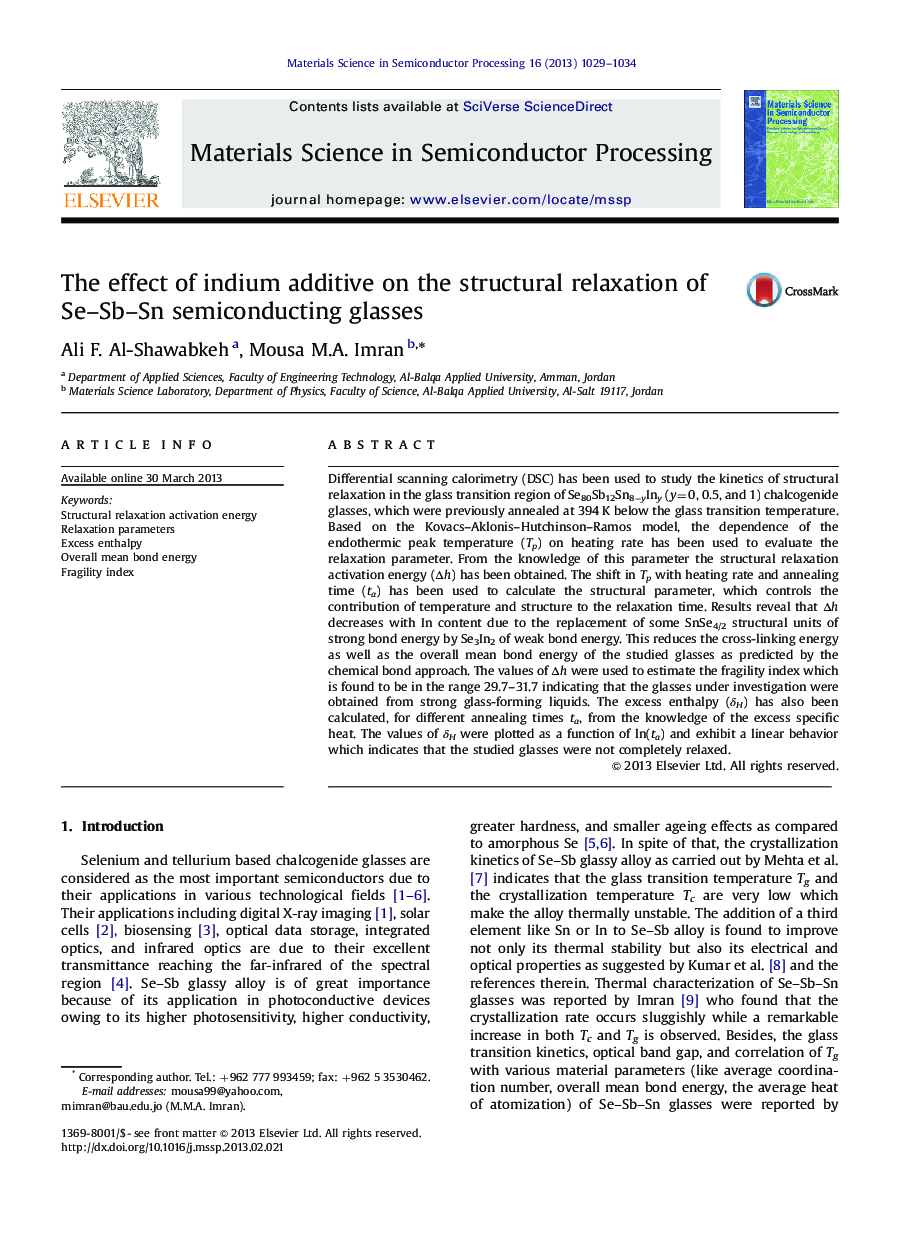| Article ID | Journal | Published Year | Pages | File Type |
|---|---|---|---|---|
| 726875 | Materials Science in Semiconductor Processing | 2013 | 6 Pages |
Differential scanning calorimetry (DSC) has been used to study the kinetics of structural relaxation in the glass transition region of Se80Sb12Sn8−yIny (y=0, 0.5, and 1) chalcogenide glasses, which were previously annealed at 394 K below the glass transition temperature. Based on the Kovacs–Aklonis–Hutchinson–Ramos model, the dependence of the endothermic peak temperature (Tp) on heating rate has been used to evaluate the relaxation parameter. From the knowledge of this parameter the structural relaxation activation energy (Δh) has been obtained. The shift in Tp with heating rate and annealing time (ta) has been used to calculate the structural parameter, which controls the contribution of temperature and structure to the relaxation time. Results reveal that Δh decreases with In content due to the replacement of some SnSe4/2 structural units of strong bond energy by Se3In2 of weak bond energy. This reduces the cross-linking energy as well as the overall mean bond energy of the studied glasses as predicted by the chemical bond approach. The values of Δh were used to estimate the fragility index which is found to be in the range 29.7–31.7 indicating that the glasses under investigation were obtained from strong glass-forming liquids. The excess enthalpy (δH) has also been calculated, for different annealing times ta, from the knowledge of the excess specific heat. The values of δH were plotted as a function of ln(ta) and exhibit a linear behavior which indicates that the studied glasses were not completely relaxed.
